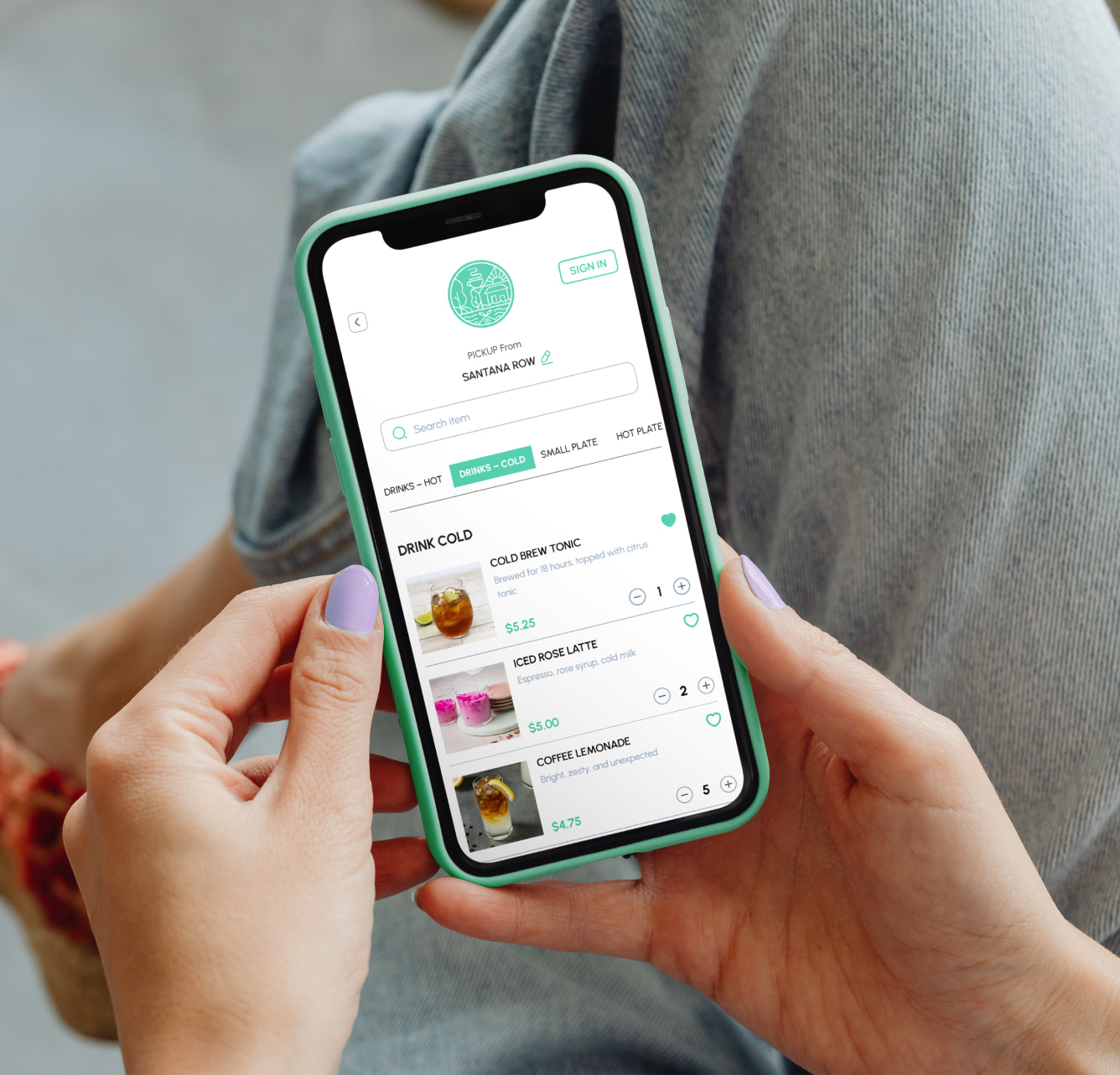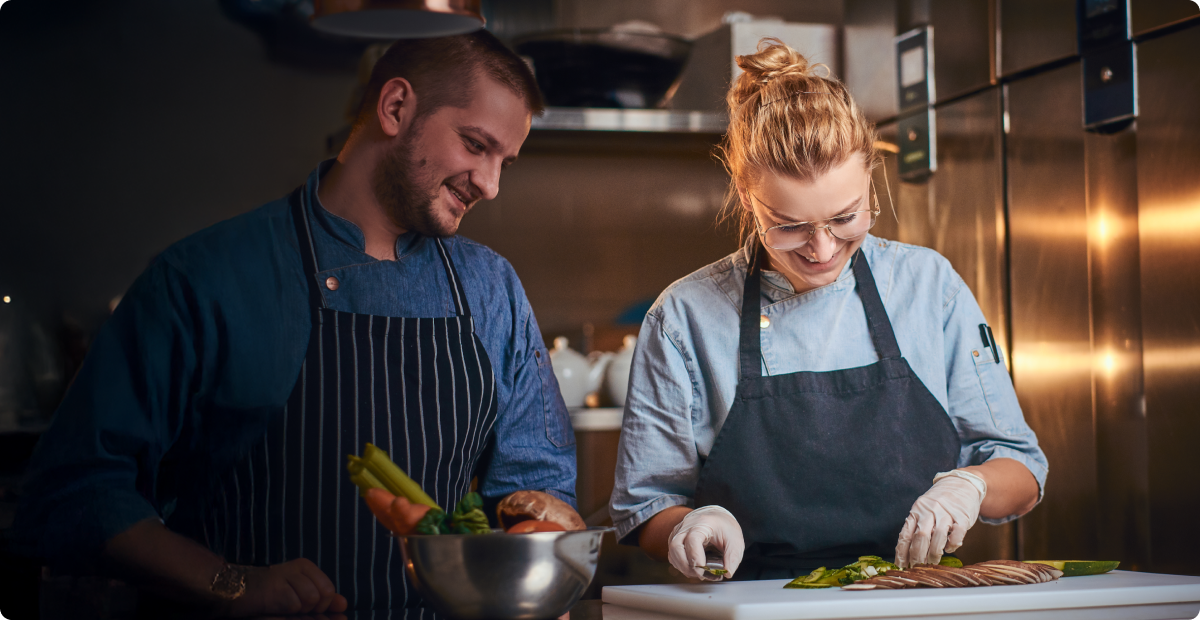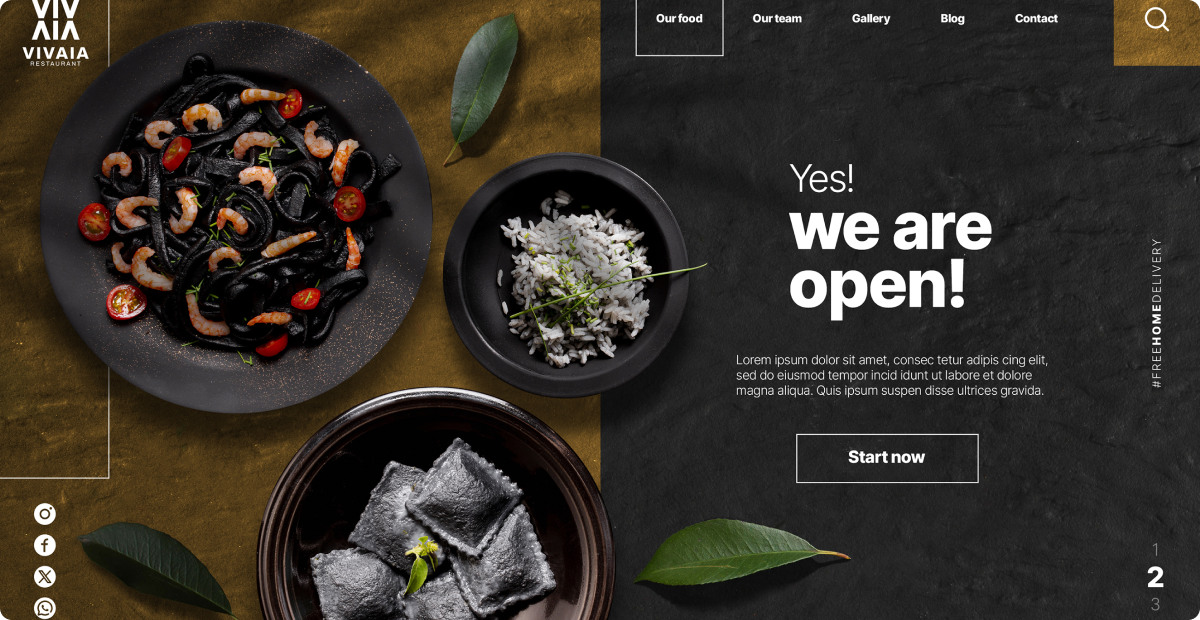Key Takeaways
- A chef is your brand in action: From menu creation to food presentation to managing staff dynamics, they heavily influence your restaurant’s identity, culture, and long-term success.
- Clarity up front prevents chaos later. Defining your needs—including role, responsibilities, experience level, and culinary style—helps you attract and retain the right candidates.
- The job ad is your first filter: A well-crafted job post highlighting your cuisine, culture, and perks draws in more relevant applicants and saves time during screening
- Test for real-world performance: Hands-on trials and cooking tests give a much clearer picture of a candidate’s skills, Creativity, speed, and ability to handle pressure
Hiring a chef is the most important decision for your restaurant.
Whether you run a white-tablecloth fine dining establishment, a bustling catering business, or a beloved neighborhood taqueria, your chef will shape the flavors, dishes, and presentations you eventually become known for.
The employment of chefs and head cooks is projected to grow by 6% from 2023 to 2033, outpacing the average for all occupations. Securing top talent requires a strategic and thoughtful hiring approach.
Today, we’ll walk you through the steps to hiring a chef correctly, from crafting a job post to conducting interviews to signing the dotted line. Let’s get started!
How to Hire a Chef: A Step-by-Step Guide
Here’s everything you need to do in your quest to hire a chef.
1. Understand Your Needs
Start with the basics by clarifying what you need in a chef.
This means asking yourself a few essential questions:
- Are you hiring a head chef to lead the kitchen, a sous chef to support them, or a line cook to handle daily prep and execution?
- Is this a full-time position, a part-time role, or a temporary hire for a specific event?
- What qualifications or experience are non-negotiable for this job?
- What type of cuisine specialization is required?
Finally, define the scope of the role. Will the chef follow an established menu, update existing dishes, or create something entirely new? Will they take on responsibilities beyond cooking, like vendor management or mentoring junior staff?
Pro Tip: Create a “Chef Profile” document that outlines must-haves vs. nice-to-haves. For example:
This clarity will help you streamline the entire process of how to hire a chef.
2. Write A Compelling Job Ad
Craft a well-thought-out job description. In addition to including the basic details, such as job type, location, responsibilities, pay, and benefits, highlight the defining aspects of your food business.
Mention the following:
- Your clientele
- Type of cuisine
- Unique perks you offer (if any), such as training opportunities abroad or the chance to cater high-profile events that build prestige and industry recognition
Use clear words and short sentences in your job description.
“We’re a 50-seat bistro in downtown Austin focused on seasonal New American cuisine with bold Latin influences. We prioritize zero-waste cooking and source 80% of our produce locally.”
The example properly outlines key details like responsibilities, pay, and schedule and communicates the hiring company’s values around wellness and sustainability.

Pro Tip: Add photos of your space or dishes in the job listing to capture attention—especially on platforms like Instagram or Indeed. Visuals quickly communicate your brand’s personality, making your post more appealing to the right candidates.
3. Promote Your Job Posting
To maximize your chances of hiring the ideal chef, you must place your job ad in front of the right people across the proper channels.
Here are the best places to find a chef:
- Personal Referrals: Reach out to your connections in your professional circle (friends, vendors, local chefs, and former colleagues) for referrals
- Social Media: If your restaurant has a strong brand or visual appeal on Instagram or Facebook, promote your job ads there
- Community Forums: Share your requirements in Facebook groups (The Chef’s Circle), chef forums (r/Chefit, ChefTalk), or relevant private Slack communities you’re part of
- Job Portals: Post your listing on career platforms exclusively for the culinary industry, including HireAChef, Thumbtack, hCareers, and iHireChefs
- School Outreach: Get in touch with culinary institutes and cooking academies to access placement programs and alum networks; find trainable talent, especially for entry-level or growth-focused roles
- Staffing Support: If casting your net that broad feels intimidating, hire a hospitality recruitment agency that handpicks candidates for you based on your job description
Pro Tip: You don’t need to start your recruitment process on all platforms; choose the free ones first. Only invest in paid job listings if you can’t attract quality talent.
4. Screen Applicants With Skill Tests
As they say, the proof of the pudding is in the eating. After you’ve built an initial shortlist, it’s time to test candidates through hands-on culinary assessments.
You want to make these simple enough not to intimidate candidates but comprehensive enough to give you a good idea of whether they’ll fit.
For instance:
- Hiring for your sushi menu? Include a knife skills demo as part of recruitment (10 onions in 5 mins, uniform size etc.)
- Are you searching for a pastry chef? Ask them to prepare a signature dessert that showcases their technical skill and creativity.
By the end of this stage, you should have a much shorter curated list of strong candidates.
Pro Tip: Run tests during slow or prep hours to avoid service disruption. Always offer compensation—even for short trials.
5. Conduct Thoughtful Interviews
This is when you get to know your candidates individually. As chefs, they’ll need to be able to think on their feet and adapt as necessary, so your questions should help you determine whether they have those abilities.
Ask how they:
- Work under pressure: Every chef needs to be a leader, too
- Delegate in the kitchen: A great chef knows when to stir the pot—and when to hand off the spoon
- Respond to unexpected emergencies: When the heat rises, real chefs stay cool and take charge
- Handle special requests or dietary needs: A skilled chef serves up flavor without restrictions
Consider asking about leadership and problem-solving experiences if hiring for a senior-level position. “Can you describe a time when you had to mediate a team conflict or motivate a struggling cook to stay focused during a tough service?”
Even a simple question like, “What’s a dish you’re especially proud of, and what does it say about your cooking?” can give valuable insight into their personality and culinary philosophy.
Remember: These interviews are a two-way conversation—a critical phase in understanding how to hire a chef who will thrive in your kitchen’s unique culture.
6. Set Up A Trial Or Cooking Test
This is the final showdown for your top candidates.
Host a live test at your restaurant, having them plan a menu and prepare meals to order—just as they would in a busy kitchen. Please pay close attention to how they approach and execute their tasks.
Assess them based on:
A. Familiarity With Handling Ingredients
Look for efficient prep, proper storage, and minimal bruising or waste.
B. Importance Of Food Safety And Hygiene
Are they constantly washing hands, sanitizing surfaces, and following correct food temperatures? This speaks to how well they’ll protect your customers and reputation
C. Clarity Of Communication With The Team
Are they clear and calm when speaking to line cooks, waitstaff, or managers? Miscommunication and disrespect slow service
D. Adaptability To Special Requests
Can they pivot when an order changes at the last minute or when an ingredient runs out? Flexibility is key in any kitchen.
E. Familiarity With Cooking Techniques
Observe their knife skills, timing, and Familiarity with various cooking methods. Bonus points if they know tips to speed up or enhance quality.
F. Creativity In Food Preparation And Presentation
Do their dishes feel fresh and original? Even simple plates should have a signature touch
G. Ability To Balance Quality With Speedy Execution
Can they move quickly without sacrificing taste or plating? Speed alone isn’t enough—it must be balanced.
H. Level Of Organization And Tidiness During Food Prep
Are their stations clean, their tools orderly, and their workflow smooth? A tidy cook is a reliable one
I. Dexterity With Kitchen Tools, Crockery, And Equipment
Watch how they handle knives, pans, and appliances. Do they seem in control or clumsy and hesitant?
J. Resourcefulness
Are they mindful of waste? Look for innovative use of trimmings, recycling practices, and cost-saving ideas that don’t cut corners
Bonus Element: Have a team member simulate a curveball—like a customer allergy or dish that needs re-firing—to test their on-the-fly thinking.
7. Check References And Reviews
A great chef brings both culinary expertise and a collaborative spirit to the kitchen. After you’ve chosen the winners, contact their former employers, colleagues, or clients for more background information.
Ask them about:
- Reliability and professionalism: Were they punctual, dependable, and consistent in their behavior? Did they show up prepared and ready to work every day?
- Adaptability under pressure: How well did they respond when things didn’t go as planned—during rush hours, equipment failures, or menu changes?
- Leadership and team dynamics: If they held a leadership role, how did they manage the team? Did colleagues respect them? Did they contribute to a positive kitchen culture?
- Communication and interpersonal skills: How effectively did they interact with front-of-house staff, kitchen team members, and management? Were they collaborative or combative?
Such background checks can reveal valuable context that you might not get from an interview or trial alone—and help you make a confident final decision.
Red Flags to Watch For:
- Overstated leadership claims not backed by references
- Vague answers about punctuality or behavior
- Inability to articulate why they left past roles
8. Evaluate Personality And Soft Skills
More often than not, your chef sets the direction and reputation of your restaurant. That’s why it’s essential to look beyond technical capabilities. The ideal chef should also bring a range of soft skills and personal qualities to the table, such as:
- Strong work ethic and drive
- A genuine passion for food
- A high degree of professionalism
- Curiosity and a willingness to adapt
- Clear and respectful communication
- Openness to feedback and continuous growth
- Ability to remain calm under tense situations
Relatable Test: Have them spend 20 minutes with your team or attend a line meeting. Observe how they engage in a less formal setting.
9. Finalize The Hire With A Solid Agreement
Seal the deal with your final choice with a contract. Draft a clear and professional employment document that leaves no room for ambiguity. This agreement should cover:
- Role And Responsibilities: A detailed scope of work, including kitchen leadership duties, menu development, and service expectations
- Salary And Payment Terms: The agreed-upon compensation, whether it’s hourly, salaried, or includes bonuses/tips, and payment frequency and any performance-related incentives
- Benefits And Perks: Paid time off, sick leave, meals, health coverage, or professional development opportunities
- Trial Or Probation Period: The duration, expectations, and evaluation process during this initial phase
- Work Schedule: Hours, days off, and any flexibility around start times or shift coverage
- Confidentiality Clauses: Nondisclosure terms for proprietary recipes or business practices
- Termination Terms: Notice periods and conditions for ending the contract on either side.
Pro Tip: Encourage the candidate to review the contract carefully and ask questions. If they request reasonable changes—like a travel allowance or a modified schedule—be open to discussion and adjust the agreement in writing before signing.
How Much Does It Cost to Hire a Chef?
Now that you understand how to hire a chef step by step, the next big question is: What will it cost? Bringing a chef on board—especially one who will play a key role in your restaurant—comes with various expenses beyond salary.
The short answer is that good chefs don’t come cheap.
The qualities we’ve enumerated above take time, experience, and genuine ability to cultivate, and that deserves to be rewarded with appropriate pay. Salary.com says the average salary for a chef in the US is $53,665, ranging between $46,648 and $62,569.
The exact compensation depends on education, certifications, and years spent in the profession. In addition, estimate the cost of the perks you offer, including benefits/bonuses, paid time off, health insurance, career advancement opportunities, etc.
Consider restaurant chef recruitment costs, too. If you plan to run paid job ads, use an ATS tracker, or work with a hiring agency, be prepared to budget as much as $4,700.
Your Chef Is the Heart of Your Restaurant; Hire Wisely
The ideal chef perfectly combines culinary, business, and personal skills—and finding such a candidate for your kitchen takes effort. As you plan your hiring process, give yourself the space to evaluate each candidate thoroughly.
A rushed hire can lead to long-term regret. Above all, trust that the right chef is out there. With patience and care, you’ll find someone who can lead your food business in the right direction.
After your search is over, make sure the rest of your operations are just as refined—especially your ordering systems. That’s where RestoLabs comes in.
It’s a powerful, easy-to-use online ordering system built for modern restaurants. Trusted by over 2,000 restaurants across 10+ countries, it helps you streamline everything from kitchen coordination to customer engagement without commissions or complicated onboarding.
With RestoLabs, you can accept orders via website, app, and QR code, share your ordering link on social media, use smart tools like order throttling, multilingual menus, and delivery zone controls, and enjoy seamless integrations with POS, delivery platforms, and payment gateways.
Plus, you can be up and running in under a week—with no contracts and a 30-day free trial. Book a demo today and see how RestoLabs can power your restaurant’s growth.
Frequently Asked Questions
The hiring timeline can range from 2 to 6 weeks, depending on your recruitment channels, trial periods, and how niche your requirements are. Chef roles requiring specialized cuisine knowledge or leadership may take longer. To ensure the hiring process is as efficient and successful as possible, it's essential to establish a clear framework for your search from the outset.
The importance of formal training versus hands-on experience depends on your restaurant’s style. While formal training provides a strong foundation and ensures consistency, hands-on experience often holds more weight—particularly in fast-paced, high-pressure kitchens where adaptability is crucial.
A head chef usually leads kitchen operations, while an executive chef often takes on a broader, more strategic role including budgeting and vendor relations. A sous chef acts as second-in-command, managing day-to-day execution and filling in for the head chef as needed.


.gif)




.png)



